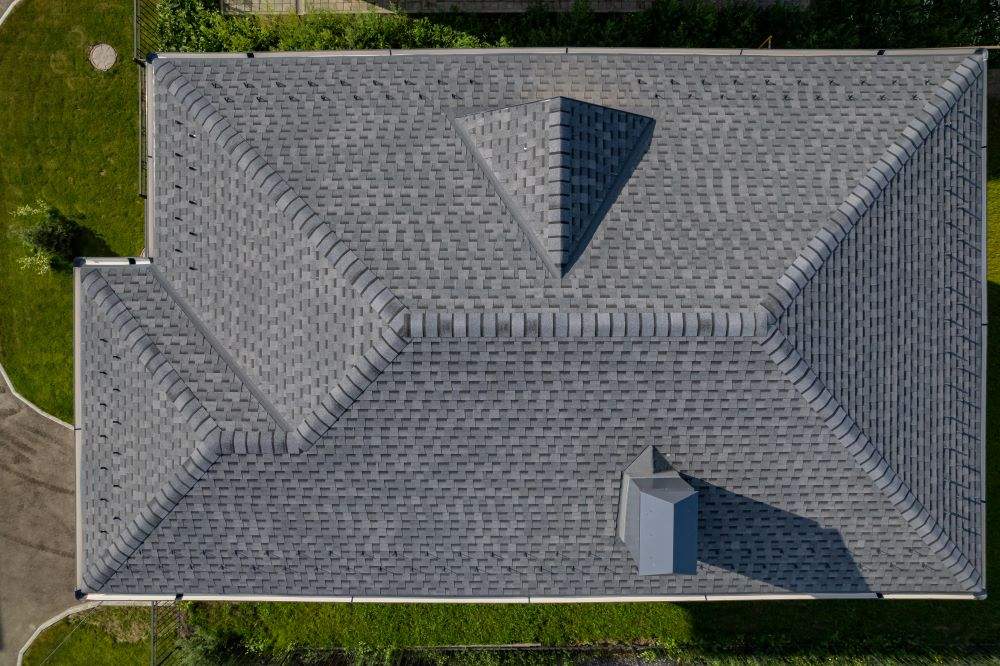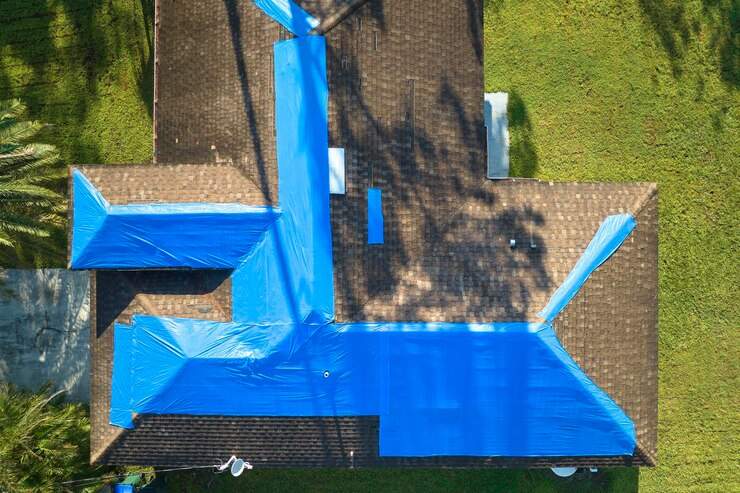If your roof looks worn or outdated, you might be wondering if painting your shingles is a smart, budget-friendly way to refresh its appearance. In the Twin Cities, where extreme weather swings from scorching summers to icy winters, not every roofing solution holds up over time.
So, can you paint roof shingles in Minnesota’s climate?
The short answer: Yes, but it must be done correctly. Otherwise, you could end up with peeling paint, trapped moisture, or even structural damage.
Before grabbing a paintbrush, let’s look at five things that work—and three that fail—when it comes to painting roof shingles in the Twin Cities.
Key Takeaways
- Acrylic or elastomeric roof paint stretches with shingles and resists UV damage, preventing cracking and peeling.
- Breathable, waterproof coatings protect shingles from leaks while allowing moisture to escape, preventing rot and trapped condensation.
- Cleaning shingles and applying a high-bonding primer before painting helps the paint stick better and last longer.
- Painting in late spring or early fall, when temperatures are mild and humidity is low, leads to better results.
- Painted shingles need maintenance, as even high-quality roof paint may require reapplication every five to seven years.
5 Things That Work When Painting Roof Shingles in Minnesota
If you’re set on painting your roof, it’s important to do it the right way—especially in Minnesota’s unpredictable climate. But if you skip key steps, you could end up with peeling paint, trapped moisture, or a roof that needs repairs sooner than expected.
Here’s what works (and lasts) when painting roof shingles in the Twin Cities:
1. Using 100% Acrylic, Elastomeric Paint
Minnesota’s temperature fluctuations cause shingles to expand and contract throughout the year. High-quality acrylic or elastomeric roof paints stretch with the shingles, preventing cracking and peeling. These paints are also UV-resistant, which helps protect against sun damage during those long summer days.
Pro Tip
Avoid oil-based paints. They don’t handle expansion and contraction well and may crack within a season or two.
2. Applying a Breathable, Waterproof Coating
Moisture is one of the biggest threats to Minnesota roofs.
Snow and ice accumulation in winter, plus spring rain, can seep into shingles if they aren’t properly sealed. Using a breathable, waterproof paint allows moisture to escape while still protecting the shingles from leaks.
3. Cleaning and Priming the Roof First
Painting over dirty, moss-covered shingles is a guaranteed fail.
Before painting, pressure wash the roof (at a low setting) and use a mild detergent to remove debris. Once dry, apply a high-bonding primer to help the paint adhere and extend its lifespan.
Local Consideration
In Minneapolis and St. Paul, roofs can collect a lot of dirt and algae, especially in shaded areas like near Minnehaha Park or along Summit Avenue’s tree-lined streets.
A thorough cleaning is key to a lasting paint job.
4. Painting in the Right Weather Conditions
Timing is everything.
The best time to paint your roof in the Twin Cities is during late spring or early fall when temperatures stay between 50–85°F. Humidity should be low, and there should be no rain in the forecast for at least 48 hours.
Avoid Summer Heat
Roof temperatures in July can reach over 150°F, which can cause paint to dry too fast and not bond properly.
5. Following Local Building Codes
In some areas of the Twin Cities, there may be restrictions on painting roof shingles. Always check with your city’s building department before starting the project.
For example, some historic districts in St. Paul (like Cathedral Hill) may have regulations about altering exterior home appearances.
3 Things That Fail in Minnesota’s Climate
Even with the right approach, painting roof shingles isn’t foolproof. Some common mistakes can lead to peeling paint, trapped moisture, or costly roof repairs.
Here are three things that often fail in Minnesota’s tough climate—so you know what to avoid.
1. Painting Over Damaged or Curling Shingles
If your shingles are already curling, cracking, or missing granules, painting them won’t fix the problem. In fact, it may trap moisture underneath, leading to rot and leaks.
In these cases, a roof replacement is the better long-term solution.
2. Using the Wrong Paint Type
Latex house paint, spray paint, or regular exterior paint won’t hold up to Minnesota’s extreme weather. These paints can peel, crack, and fade within a year.
Always use a paint specifically designed for roofing materials.
3. Expecting It to Be a Long-Term Solution
Painting shingles can improve curb appeal and reflect sunlight to help with energy efficiency, but it’s not a permanent fix. Even with high-quality paint, expect roof maintenance to repaint every 5–7 years, depending on weather exposure.
Need a Longer-Lasting Roof Solution? We Can Help.
Painting your roof might seem like a cost-effective way to refresh its look, but in the Twin Cities’ unpredictable climate, it’s not always the best long-term solution. If your roof is showing significant wear or damage, a professional inspection can help determine the best approach—whether that’s painting, repairs, or a full replacement.
At Allstar Construction, we specialize in high-quality roofing solutions that stand up to Minnesota’s harsh winters and humid summers. Whether you need expert advice on painting shingles, a roof inspection, or a full replacement, our team is here to help.
Call us today at 763-373-1066 for a free estimate and consultation!
Let’s find the best roofing solution for your home.



